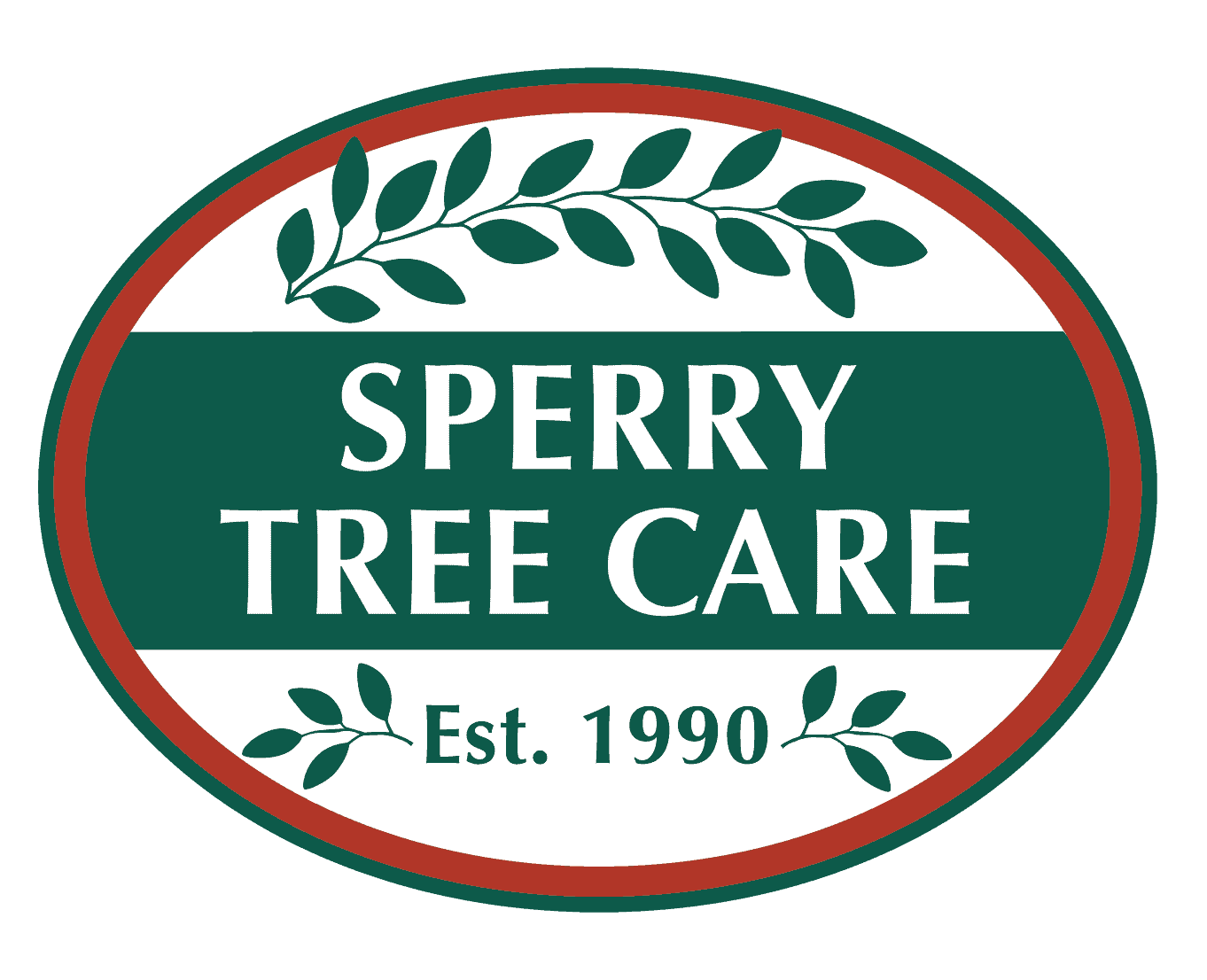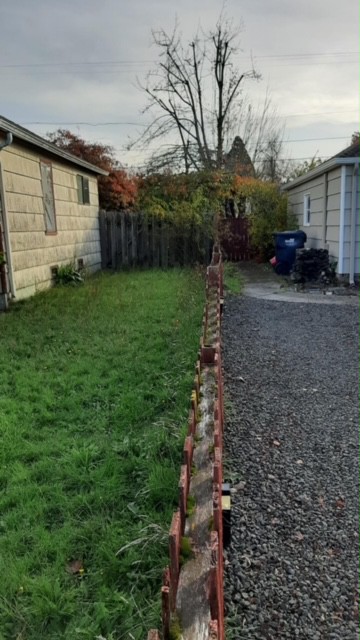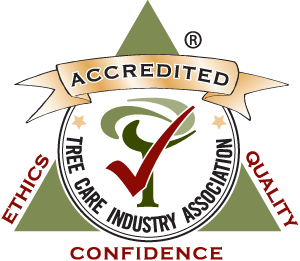This issue has to be the most common one of all when dealing with trees. I can’t tell you how many times – sometimes in a single day – that the neighbor’s tree(s) is in the conversation!
Well, that is easy to understand why, right? Most of us live in modest lots with (hopefully) a certain amount of vegetation in it. Landscapes are often designed with trees and shrubs on the perimeter and trees, even potentially large ones often planted within a few feet of the property line.
After a few years and especially if the owner has not really selected the right tree, the tree is growing and crosses the property line.
Depending on the tree and one’s tolerance, this situation can be a blessing or a curse. Let’s start with the positive part of it with an example: you really like nature and enjoy your backyard by spending time in it, you have friends over for a barbecue and your patio happens to be sheltered perfectly by the canopy of your neighbor’s tree, providing shade at the crucial moment of the day. Another one (my case, actually) is the presence of a large Western Red Cedar spilling over the fence to give a wonderful privacy screen. Except for a little bit of pruning and some raking for debris, these examples are mostly positive.
I just mentioned “raking debris” and that is the perfect segue to the negative view, usually involving what most people call “the mess”. All trees, even evergreen ones, will shed debris in the form of dead leaves or needles, dead branches, excretions from feeding insects like aphids etc. Obviously, Fall is the time when complaints rise as gutters get filled, patios and decks are covered and the raking begins. The benefits of the neighbor’s trees are quickly forgotten and we are called to help!
There you have it; the two sides of an all-too-common situation that is not going anywhere! So, what can you do? Or rather, what can you legally do? Most States have what is called the “Right of Self-Help” (“Neighbor Law: Fences, Trees, Boundaries and Noise”, Jordan and Doskow) occasionally called the Common Law allowing you to perform the following tasks within certain conditions; the main points to remember are that a neighbor (or the contractor hired for the work):
. May not go onto the neighbor’s property when pruning unless it is to avert imminent danger.
. May prune only to the boundary line.
. May not cut down the tree.
. May not destroy the tree itself.
The last item can be pretty vague but easily explained in this case: let’s say your neighbor has a pretty wooded lot with one fir at the very edge of it. The entire foliage of the fir extends over your property since the tree had to compete for light with the surrounding trees of the lot. In this case, removing the branches over your property would almost certainly kill the tree since firs are not able to regenerate foliage like most other trees. This would be an example of a violation of the Right of Self-Help.
The majority of cases involve slight pruning to keep the trees away from reaching a house, clear the fence of provide more light. These can be done without the permission of the owner of the tree if the points mentioned above are respected. Most pruning cuts will shorten a branch rather than remove it entirely but when a branch needs to be removed back to the trunk to reach the goal, the trunk is almost always on the other side of the property line. The best approach at that time is to have a discussion with your neighbor and invite your contracting Arborist to explain the situation as well as pointing out the branch(es) in question and the way the work will be performed.
Trees not only grow branches, they also need to secure themselves in the ground and find food and water by growing a root system. Roots, being opportunistic, will grow and colonize soils where food, water, warmth and air will be available. That’s why it is common to see roots growing on the surface of lawns and landscapes that are regularly irrigated. Unlike the canopy of a tree, the root system is almost always a mystery since we see a very small portion of it. In this case, we recommend you call a Certified Arborist that has been trained to evaluate such situations since the soils condition and the tree species can greatly influence the growth of roots.
Root systems can be just a nuisance in a landscape but also a major source of infrastructure damage in some situations. It is the fate of most trees growing in an urban setting; soon or later, roots will reach sidewalks, driveways and foundations. Prevention is a great way to delay issues related to roots. If you are concerned about the extent of the neighbor’s tree roots reaching your foundation or driveway, a preventive excavation along the concrete line is recommended. If done soon enough, most roots found in the excavation will be small and can be pruned along the excavation line without much trouble.
If the situation is more serious and the Certified Arborist you hired suspects large roots are causing major damage, we strongly encourage you to talk to your neighbor about it and again, with the hired professional present. Mitigations might lead to severing a few roots, “shaving” the top of others or perhaps the removal of the entire tree if root severance is too severe. The integrity of a house will always prevail over the retaining of a tree but starting with a consultation and discussion with both parties and eventually a written report following the consultation is the ideal way to go.
You might find that your neighbor is not cooperative or even hostile towards any discussion or mitigation regarding their tree(s). Refer first to the Right of Self-Help with the assistance of a Certified Arborist or Registered Consulting Arborist and in serious cases like the recommendation of root severance or removal to protect one’s property, a written report with a copy sent via certified mail to your neighbor is the way to go.
Last aspect of the “neighbor’s tree being an issue” is the concept of the tree representing a risk to you or your property. This is a discussion to have with a trained professional who has been qualified in tree risk assessment (TRAQ: Tree Risk Assessment Qualification). The risks associated with trees can be greatly influenced by emotions, unfounded fears and plain misinformation coming from untrained Arborists who often recommend excessive measures of mitigation when the situation is actually not that bad.
Obviously, a large dead tree close to your fence will be an easy case but a healthy albeit leaning tree with a self-correction in the lean is not necessarily something requiring removal.
Mitigations can be as easy as reducing the load of some branches, removing dead and broken branches (often called “hangers”), cabling to support weak forks and possibly some size reduction in the case of an old tree showing obvious decline in its canopy. It is very likely that what is recommended by the TRAQ Assessor will benefit the owner of the tree as well; the installation of a cable to support a weak fork comes to mind. Maybe the neighbor never had their tree inspected and your concern brings the tree defect to the surface, triggering the maintenance of the entire tree instead of being just for the part over your property.
To summarize, I strongly believe that a discussion with your neighbor is always the first step, even if you are just shortening some branches. Connecting with our fellow humans seems to be less and less comfortable for some but almost always having a great outcome with an honest and open discussion.
There are always exceptions of course but those are not nearly as common as the simple interactions between regular people. Staying away from the Court is preferred but can eventually be the only direction for some cases. If this situation arises, make sure you have the support of professionals with the proper credentials.



